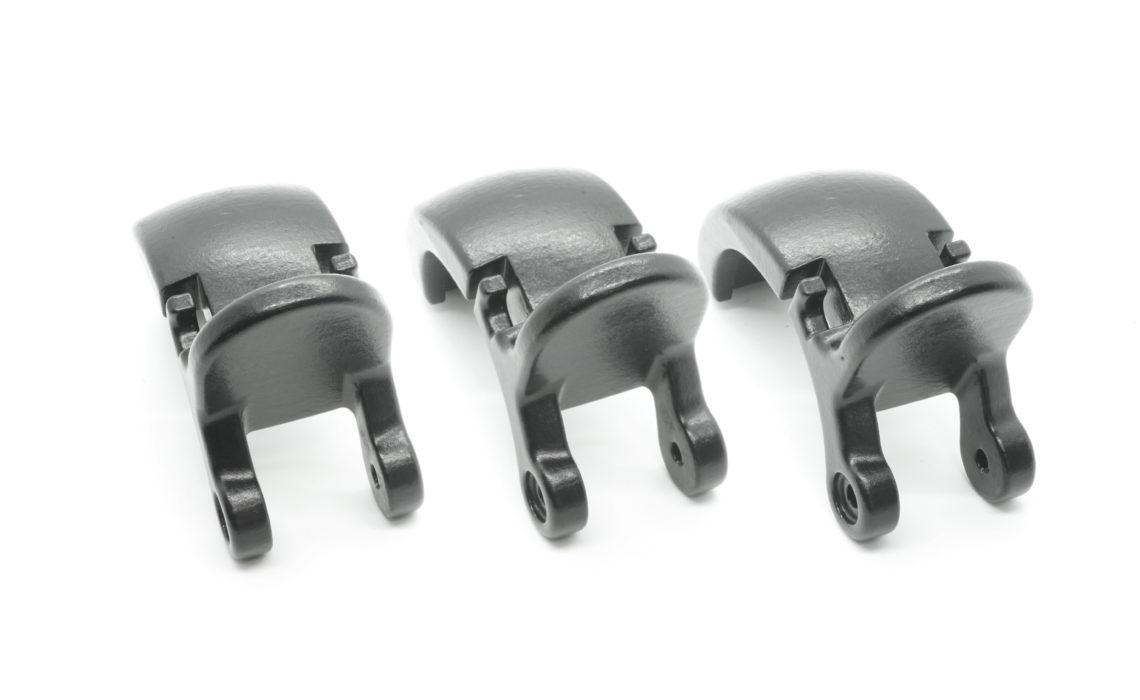
Learn more about:
- Why TPU is such a unique elastomer for 3D printing.
- The benefits of TPU, like chemical and abrasion resistance.
- Why TPU is making groundbreaking strides in applications like automotive and even footwear.
- 3D printing TPU parts with Multi Jet Fusion or Selective Laser Sintering technology.
Created in a German lab in 1937, Thermoplastic Polyurethane (TPU) is now one of those ubiquitous plastic materials that spans numerous technologies in industrial manufacturing, due to the potential for shaping the highly malleable material via a heat source into countless shapes and structures for a wide range of applications. It’s easy to understand why TPU is so popular in 3D printing as well as other traditional types of manufacturing, and why it has become an industry standard no matter the method.
Composed of segmented copolymers, TPU is unique in its chemical makeup. Exhibiting a contrasting juxtaposition in terms of its components, this elastomer features a soft segment, as well as one that is more rigid. Combined, these elements create the rubbery texture found in TPU–leading to simplicity in processing, as well as the material’s mass appeal.
With deep roots in traditional manufacturing, designers and engineers continue to rely on this special mix of high-grade thermoplastics for methods like injection molding. Common mold designs can be used for creating parts with TPU; however, a handful of additives may be considered for better results, along with processes like drying the material beforehand, molding, and spending time in post-processing.
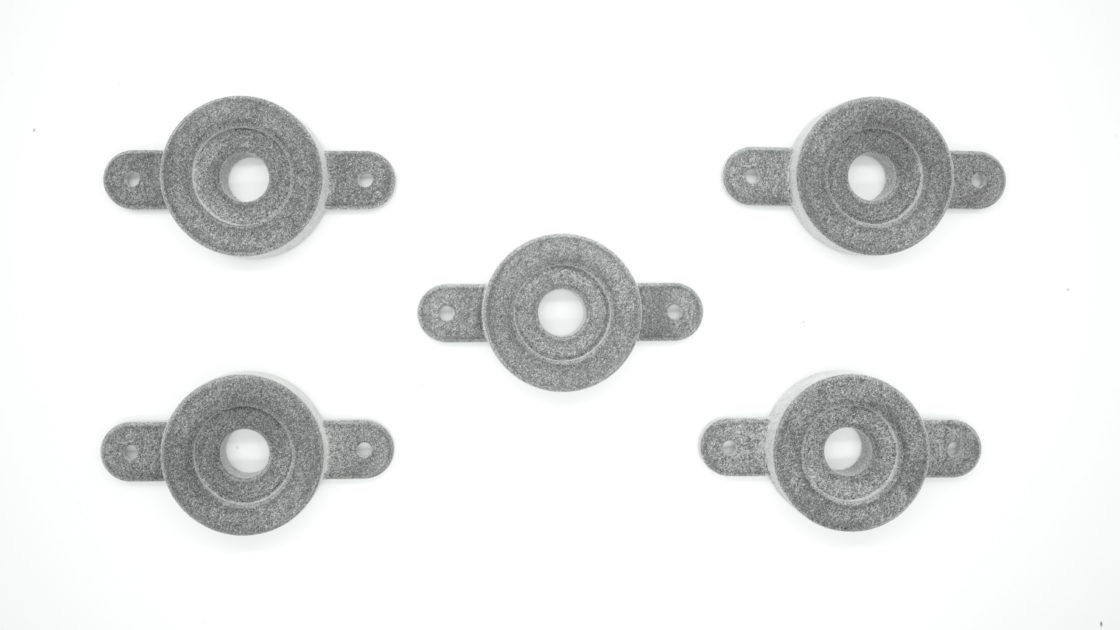
The Benefits—Where to Begin?
Shapeways 3D prints TPU via both Multi Jet Fusion (MJF) and Selective Laser Sintering (SLS) technologies, offering multiple benefits over other elastomers. Resistance is at the top of the list for production of durable parts meant to stand the test of time. TPU is highly resistant to impact and wear and tear, but also offers excellent abrasion-resistance–a critical property for mechanical parts that are expected to withstand years of friction as parts rub against each other during use and can begin to degrade. The ability to resist chemicals, along with oils and solvents, and harsh weather and heat, also makes TPU an excellent choice for 3D printing and subsequent industrial use.
Other great features include:
- High elongation at break – A material characteristic measured by comparing where a part breaks after being strained, versus its original length, TPU scores off the charts. Featuring exponentially higher elongation at break–or ductility–than other 3D printing materials due to its elasticity, TPU is especially useful in critical applications because it is both flexible and tough and able to handle substantial deformation to its shape without breaking.
- Superior tensile strength – Defined by how much pulling strain a part can take before fracturing, tensile strength is measured through units of pressure called megapascals (MPa). With a high tensile strength of up to 60 MPa, coupled with good flexibility, TPU can be used for high-performance parts expected to withstand rigorous use.
- Excellent load-bearing capacity – This is an important measurement as it testifies to how much weight a 3D printing material can handle before it fails. Load-bearing capacity is an extremely important factor for applications requiring high-performance products that are expected to last, including larger parts as well as smaller mechanical devices like tubing, hoses, and seals.
With the ability to print highly flexible, interlocking products as well as industrial parts on the large scale, both SLS and MJF 3D printing offer greater design freedom too. This is mainly due to a sophisticated system that eliminates the need for supports during 3D printing, meaning that designers aren’t restricted by the worry of figuring in complex support structures.
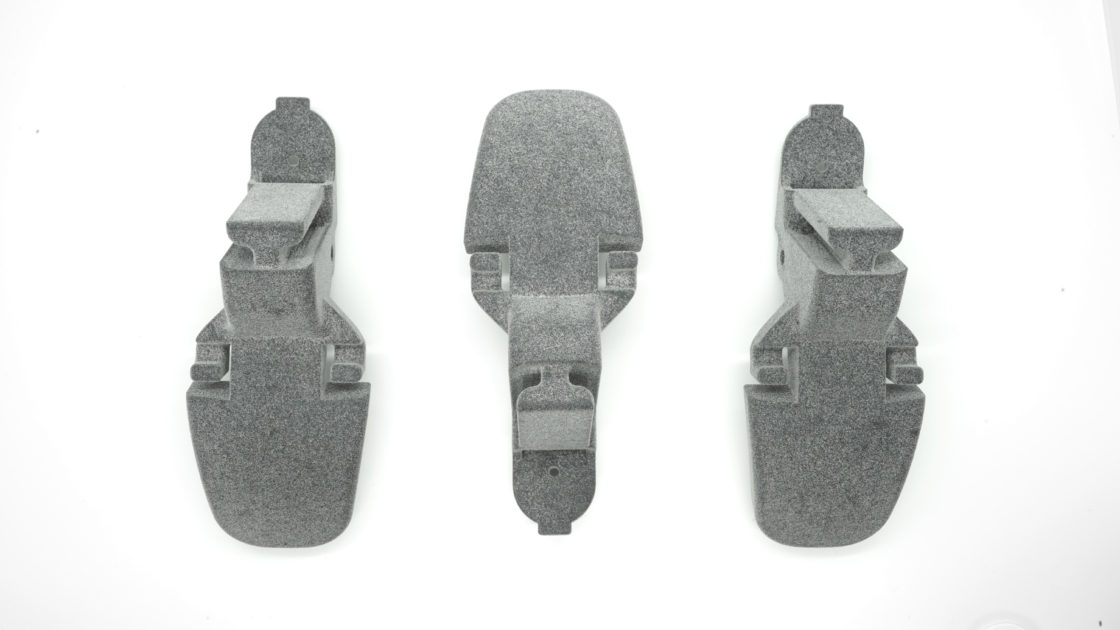
3D Printing TPU with Multi Jet Fusion Technology
Shapeways offers Multi Jet Fusion (MJF) for 3D printing Ultrasint® TPU 01, resulting in prototypes and parts that are robust, with strong mechanical properties. Like SLS 3D printing, MJF is powder-based; however, it does not rely on laser heat to melt layers together. Instead, one layer of powder is deposited after the other, 80 microns at a time, with an inkjet array moving back and forth jetting out fusing agents to fuse the powder particles together, and detailing agents to assure good detail and smooth surface texture.
As the layers melt together quickly via thermal heat with MJF 3D printing, resulting parts are stable and well-defined. A standalone cooling system also helps eliminate challenges like warping, shrinkage, or overall failure in parts.
Design Guidelines
For this material, 3D models must be within the following minimum and maximum bounding box sizes:
- Bounding Box Min
- At least 1 extant dimension over 19mm
- Bounding Box Max
- 284 × 380 × 380mm
This 3D printing material is available in a gray, natural finish. Explore the design guidelines for TPU further here.
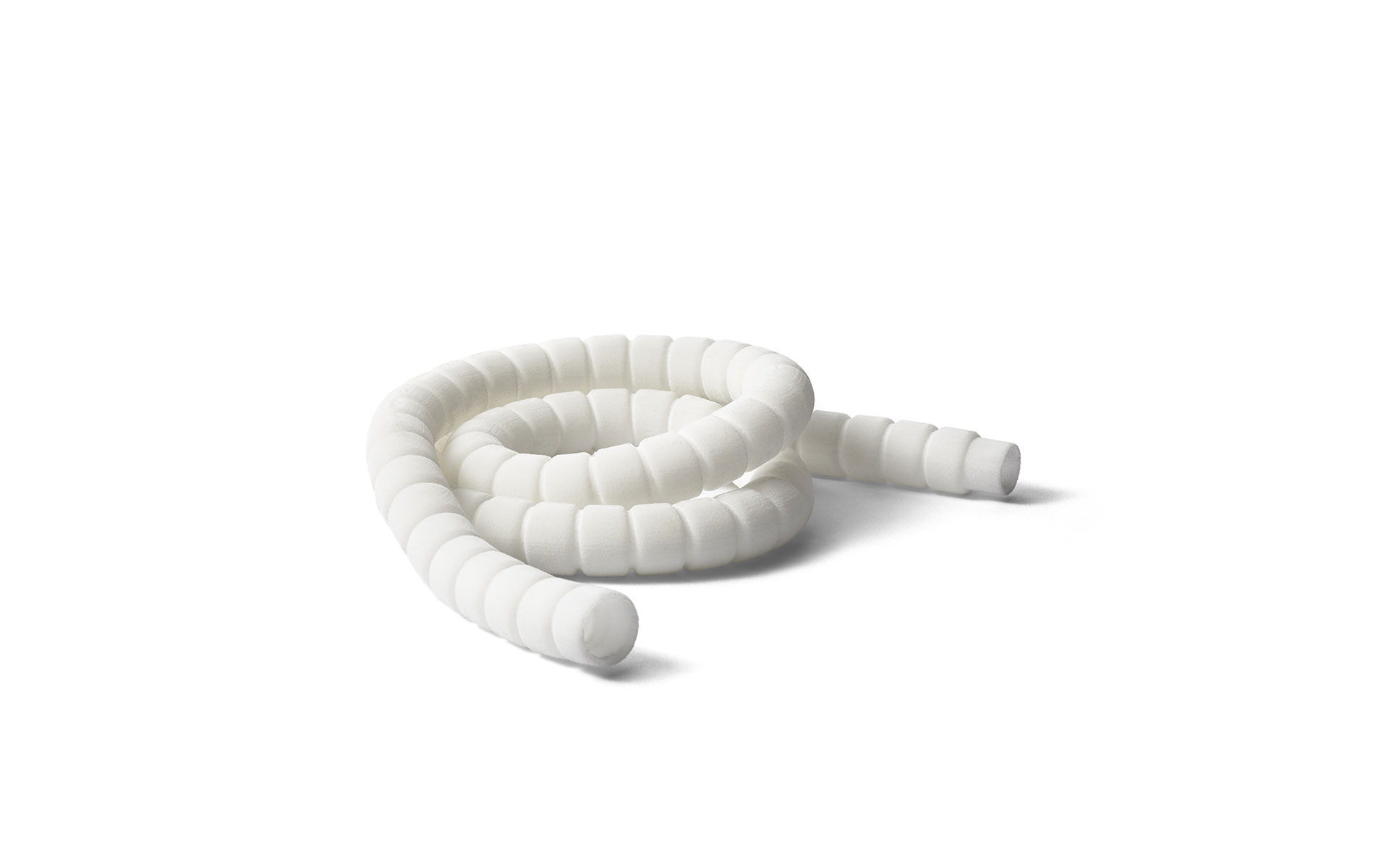
3D Printing TPU with Selective Laser Sintering Technology
Featuring power and speed, SLS 3D printing technology makes it possible for Shapeways to 3D print highly accurate TPU parts that are detailed, with smooth surfaces. One of the oldest 3D printing technologies–aside from SLA 3D printing–SLS is a subcategory of powder-bed fusion and heavily relied on for both rapid prototypes and highly functional end parts.
The process is set into motion as a small amount of powder is dispersed onto the SLS print bed. A high-powered laser traces the shape of the 3D design into the powder as each layer is 3D printed and fused together at a high temperature just below the melting point.
Design Guidelines
For this material, 3D models must be within the following minimum and maximum bounding box sizes:
- Bounding Box Min
- 15 x 15 x 0.7 mm
- X + Y + Z ≥ 15.0 mm
- Bounding Box Max
- 200 x 200 x 200 mm
This 3D printing material is available in white, with a Standard matte finish. Explore the design guidelines for 3D printing TPU with SLS technology further here.
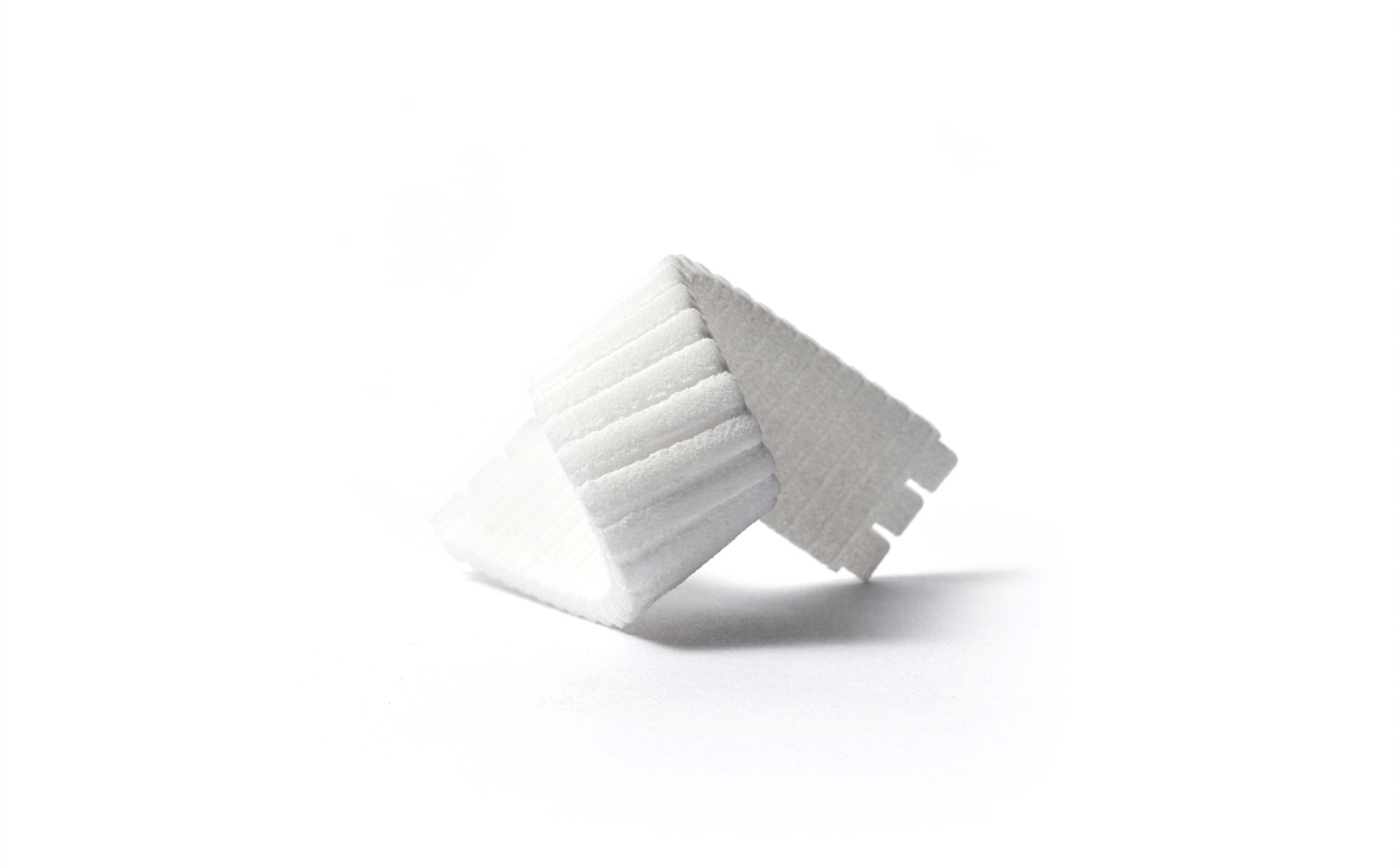
Typical Applications for Thermoplastic Polyurethane
Automotive
While the automotive industry has been using 3D printing for decades in prototyping, as well as functional parts for both the interiors and exteriors of vehicles, TPU allows for the design of truly personalized components, allowing for consumer-specific comforts. While such options may become much more detailed in the future, today’s manufacturers are hard at work not only using additive manufacturing for critical components but also in focusing on the drivers themselves and developing new luxuries like customized headrests and seats. TPU is often chosen for these parts because of its versatility in terms of softness for one part, yet hardness and functionality for another. There are a variety of different finishes available too for automotive applications.
Consumer accessories
The 3D printing industry is well known for expanding options to consumers in the area of accessories, mainly due to the enormous potential offered by expanded design freedom and the ability to customize. This is especially true for items like smartphone cases, allowing customers to completely personalize an item, adding exciting and unique touches to a product that is pretty much impossible for most people to live without today. Not only that, these items are durable enough to last for years. TPU is also an excellent choice for adding quality and customization to highly functional items like soft grip systems and rubber mats.
Footwear
3D printing has made a powerful impact within the footwear industry, and on multiple levels. Designers working from their studios or homes are able to make creative new eco-friendly designs on demand and send them to Shapeways for 3D printing services. Large corporations are using materials like TPU to max out designs for epic, futuristic looking running shoes with a range of features meant to propel athletes and everyday wearers forward in terms of comfort and stamina.
There is also the potential for incredibly personalized fit in shoes, beginning with insoles that can be 3D printed to encourage better support and balanced gait, as well as orthotics that can be made to fit and re-sized easily as needed. With rapid production in 3D printing, more durable footwear products can be made that are also more flexible, and lighter in weight. 3D scanning plays a role for much of the footwear industry as the wearer’s measurements can be scanned quickly, making unprecedented strides in comfort, rather than expecting someone to fit into a typical size, or somewhere in between.
Medical devices
Another area where 3D printing is offering enormous impact, TPU is behind the production of numerous medical devices bearing complex, lightweight geometries that may not have been possible before with traditional manufacturing. Products like braces, prosthetics, and implants can be 3D printed after 3D scans are taken from patients, offering them safe, customized devices that are able to stand up to long-term daily use without causing skin irritation. For children wearing prosthetics or orthotics this is an incredible boon, with fittings taking a fraction of the time and without discomfort. While such devices may have taken weeks or even months to arrive previously, at great expense, now they can be made quickly–and changes can be made to designs quickly also.
Robotics
TPU is also suitable for robotics, and especially softer applications which may require extremely flexible parts like connectors, actuators, and simulated fingers, arms, and flex grippers for performing tasks whether on a manufacturing production line or at the individual level. This material can also be used for tires and other accessories attached to moving robots, as well as those that may be performing 3D printing activities on their own.
Sports gear
Because of the protective nature of sports gear, 3D printing technology with TPU is able to play a very important role in helping to prevent injuries in players. Using lattice structures for interior strength and incredible absorption on impact, 3D printed protective gear may include helmets, guards, and more, all with the potential to be heavily customized for the comfort and safety of the athlete.
Ideas for 3D Printing with TPU? Get Started Now
For faster turnaround time and highly customized, production runs at any volume, contact Shapeways to learn more about on-demand 3D printing. Allowing manufacturers to keep a digital inventory of their stock or spare parts, on-demand printing means decreasing or saying goodbye to warehouse space altogether.
Upload your design now to get started in 3D printing with TPU.
About Shapeways
Enjoy the benefits of this advanced technology and a wide range of materials from Shapeways for 3D printing your creations with accuracy, complex detail, and no minimum or limits in terms of mass customization or single part orders. Shapeways has worked with over 1 million customers in 160 countries to 3D print over 21 million parts! Read about case studies, find out more about Shapeways solutions, and get instant quotes here.

